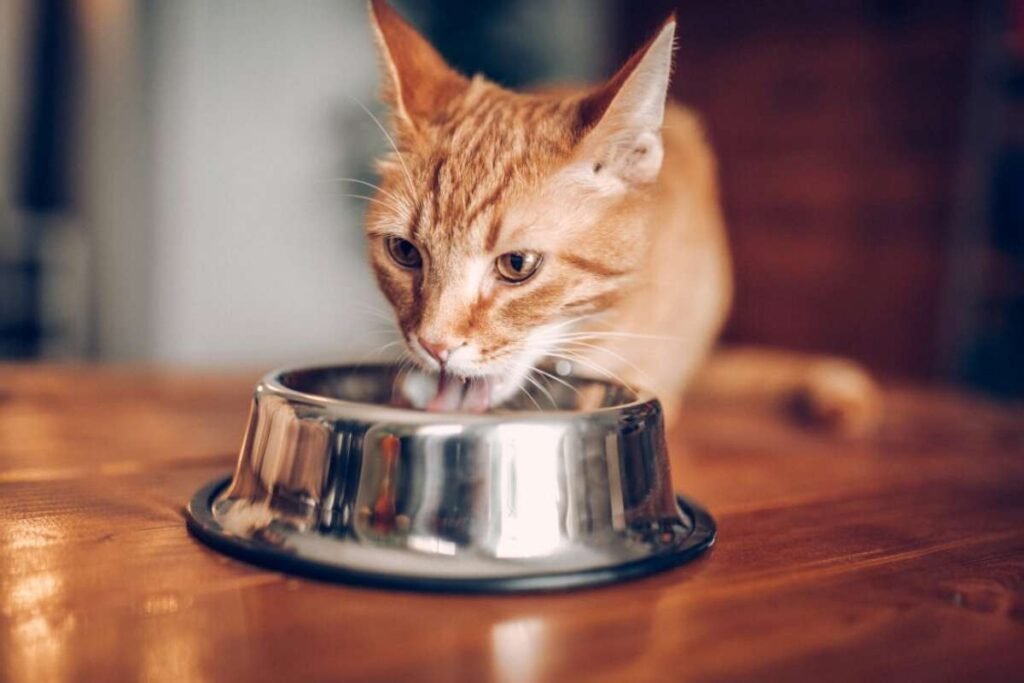In recent weeks, a concerning rise in bird flu cases in cats in the United States has sparked new safety measures for pet food and poultry surveillance. These incidents, linked to contaminated raw pet food, have raised questions about food safety and potential risks to pets.
Surge in Bird Flu Cases in Cats
Since December, more than two dozen domestic cats have been diagnosed with bird flu (H5N1), a virus that can be fatal in felines. Federal officials are working to understand the source of the virus, with some cases traced to raw, unpasteurized milk, which has long been a known risk for spreading the virus to cats. However, a more alarming development is the link to raw pet food products. These are the first known cases in the U.S. of bird flu infections linked specifically to pet food.
As a result, one pet food manufacturer has already issued a recall, and federal authorities are taking steps to strengthen regulations surrounding pet food safety. The U.S. Food and Drug Administration (FDA) recently announced new rules requiring pet food companies to address the potential hazards of bird flu in their safety plans. The USDA has also launched enhanced surveillance efforts for poultry farms to better monitor for the virus.
Despite these new developments, health experts have reassured pet owners that there is no need to panic. There is no evidence that infected cats have transmitted the virus to humans. The cases so far have been tied specifically to raw or unpasteurized milk and uncooked meat or poultry products.
The Risk of Raw Pet Food
Experts have long known that bird flu cases in cats especially when they prey on wild birds or consume raw products, which can contain high levels of the virus. One of the earliest signs of bird flu outbreaks has been deaths among farm cats that consumed raw milk from infected cows. Pasteurization, which involves heating milk to kill harmful pathogens, prevents the virus from spreading through milk.
However, recent cases in indoor cats—who had no direct contact with birds or dairy farms—have raised alarms. In December, Oregon health officials reported the death of a pet cat after consuming raw, frozen pet food from Northwest Naturals. The food was found to be contaminated with H5N1, the same strain that infected the cat. Following this, the company voluntarily recalled certain products.
California has also reported several cases of cats falling ill after consuming raw pet food. In one Los Angeles household, five cats became sick, and two died after eating raw pet food. Officials later confirmed that one of the pet food brands, Monarch Raw Pet Food, tested positive for the virus. While the company has cooperated with authorities, it has not yet initiated a recall, noting that there are no other known cases involving its products.
How the Virus is Getting Into Pet Food?
The precise origin of the bird flu cases in cats pet food remains unclear, though experts have identified potential sources. Genetic analysis has shown that some viral samples from infected cats are closely related to samples taken from turkey farms in Minnesota. When bird flu is detected in farmed poultry, federal regulations mandate the culling of all infected birds. These birds are not allowed in food products. However, if a bird becomes infected shortly before slaughter or experiences only mild symptoms, it could potentially slip through the regulatory system, contaminating the food supply.
Commercial pet food, particularly raw food, is subject to FDA regulations that require manufacturers to create safety plans to prevent contamination. The agency has a zero-tolerance policy for pathogens like salmonella, listeria, and E. coli in ready-to-eat pet food, including raw products. However, some experts argue that enforcement of these regulations can be inconsistent due to limited resources for pet food oversight.
Federal Actions to Address the Issue
In response to the rising concerns, the FDA has implemented new rules for pet food manufacturers, particularly those producing uncooked or unpasteurized products. These companies are now required to update their safety plans to address the risk of bird flu contamination. Meanwhile, the USDA has introduced new surveillance guidelines for large poultry farms in Minnesota and South Dakota, which could be expanded to other regions in the future.
While some pet food manufacturers may introduce additional precautions, such as sourcing ingredients from suppliers who regularly test for bird flu, others may feel that no new safeguards are necessary. Northwest Naturals, for instance, has said it is strengthening its food safety plan despite the recall.
What Pet Owners Can Do?
To protect pets, experts recommend avoiding raw milk, meat, or poultry products, as they pose a risk of contamination. Raw food has always carried the potential for foodborne pathogens, and the presence of bird flu only heightens these concerns. Pet owners who have been feeding their animals raw pet food can reduce the risk by cooking the food before serving it.
Dr. Kristen Coleman, an infectious disease expert at the University of Maryland, encourages pet owners to become familiar with the sourcing and processing of their pets’ food. If a company cannot answer simple questions about food safety measures, it may be time to stop purchasing that product. Additionally, pet owners should limit their pets’ contact with birds and report any sick or dead birds to local authorities.
In conclusion, while the risks of bird flu cases in cats food are growing, there are practical steps that pet owners can take to ensure their pets’ safety. As surveillance efforts increase and regulations evolve, it is crucial for pet owners to stay informed and take necessary precautions to protect their pets from this emerging threat.









